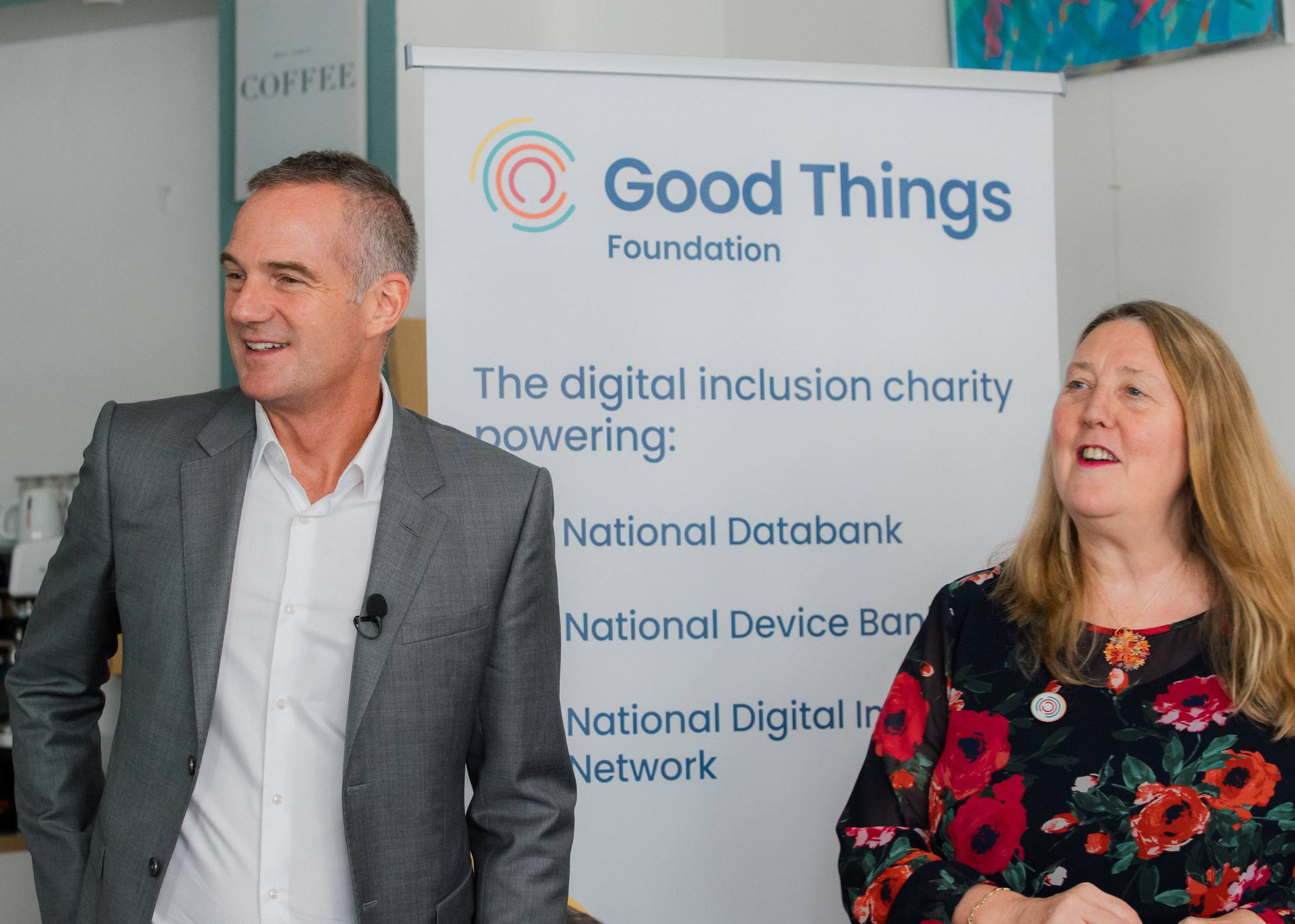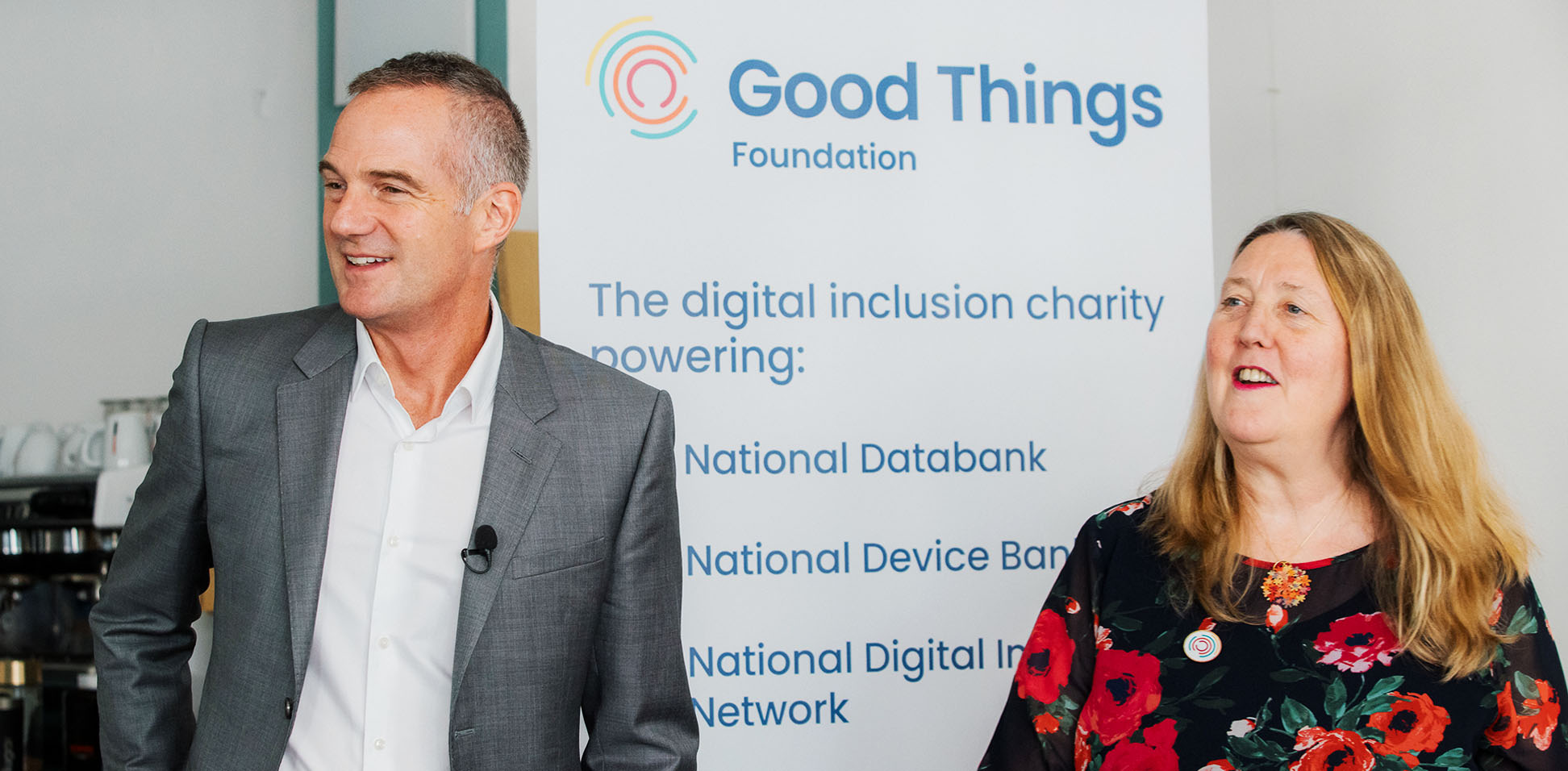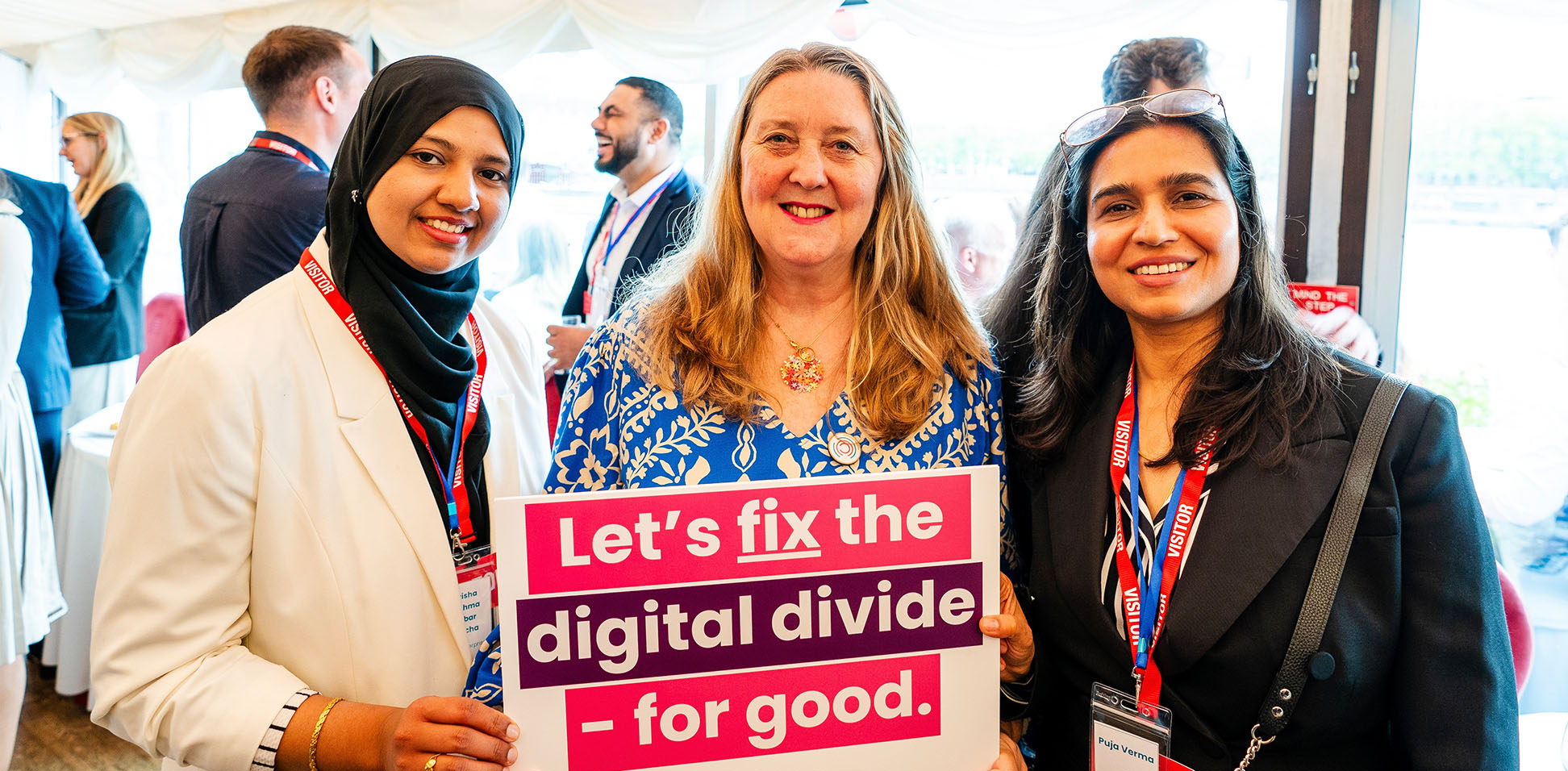A big day for digital inclusion - world class political leadership to fix the digital divide
The UK Government has launched a Digital Inclusion Action Plan - our Group CEO Helen Milner OBE responds.
After years of advocating for action on digital inclusion, the launch of the Government’s Digital Inclusion Action Plan feels like I’ve spent a decade walking in the desert, and now I have been given a big jug of water and a really good map to an oasis. There is so much to celebrate and it’s a huge “first step” in what I’m hoping will be a very good year for digital inclusion.
Today I am very happy.
Breaking down silos in Government
With five important signatures on the foreword, I finally feel like we have had the cut-through to the proper, serious political leadership needed to drive systemic change.
Alongside Peter Kyle (Department for Science, Innovation and Technology) are Bridget Phillipson (Department for Education), Liz Kendal (Department for Work and Pensions), Wes Streeting (Department for Health and Social Care) and Angela Rayner (Ministry of Housing, Communities and Local Government and Deputy Prime Minister) - all signing up to action on digital inclusion.
I’ve been vocal about my love of mission-led Government, so I’m very pleased to see a new cross-Government ministerial group which will feed into all five mission boards, placing digital inclusion at the heart of Government.
In addition to the departments in the foreword, the Treasury will be on the ministerial group to deliver on the connection that they have already made between financial and digital inclusion through the Financial Inclusion Committee (chaired by the Economic Secretary to the Treasury) and, importantly - according to the Action Plan - to support departmental bids for funding for digital inclusion.
If this isn’t a world leading approach it’s definitely a world class approach. For more than a decade I’ve bored even myself using the phrase of ‘breaking down the silos’; now we have an official commitment to do just that:
- A new Digital Inclusion and Skills Unit in Department for Science, Innovation and Technology (DSIT) - working with Government Digital Services (GDS)
- Department for Education (DfE) focusing on better digital skills and inclusion for young people and adults who are in and out of work, increasing investment from employers, and embedding in the work of Skills England (now chaired by the impressive Phil Smith)
- Department for Work and Pensions (DWP) focusing on those people who are out of work and for whom digital exclusion is a barrier and digital inclusion an enabler
- The Disability Unit in the Cabinet Office focusing on digital inclusion for people who are deaf and disabled
- Department for Digital, Culture, Media and Sport (DCMS) for civil society, loneliness and public libraries
- Ministry of Housing, Communities and Local Government (MHCLG) to recognise and harness the role of local authorities, local partners and place shapers
- Department of Health and Social Care (DHSC) for the NHS workforce, for patients and for social care
- HM Revenue & Customs (HMRC) will be including digital inclusion measures in their digital transformation road map due in the Spring.
Wow. What a list! I’m sure this is a combination of hard work from the Digital Inclusion team in DSIT and pushing on the open door across Government where civil servant colleagues know that digital exclusion is keeping people from services and from opportunities.
This is a Government with less than a year under their belt. The (dry sounding) ‘machinery of government’ that brought GDS, Central Data and Digital Office (CDDO) and i.AI into DSIT seems to be paying off already.
We have a Secretary of State and teams at DSIT who understand the inextricable link between driving better public services through the use of technology and making sure as many citizens as possible can benefit from those improvements.

A strong and progressive starting point
This is definitely a major milestone from the Government on digital inclusion. A wonderful and progressive start. It’s not full of big audacious deliverables - I assume those would need access to the kinds of budgets they don’t currently have.
Alongside the cross Government commitments, the new unit, ministerial group, and the action committee (to “scrutinise and steer”), a couple of others to pull out are:
- A Digital Inclusion Innovation Fund to support local initiatives that increase digital participation
- Following other public sector pioneers in reusing tech for social good, a new Government pilot will test how to unlock the repurposing of government laptops across three Departments, with the Digital Poverty Alliance (ending in August).
We are incredibly excited to announce our own pledge to work with DSIT, VodafoneUK, and Deloitte to lead on a responsible device donation charter.
Supporting people and the planet, the Charter will promote circularity and (hitting those vital ESG goals) will enable more businesses to increase the number of devices donated to digitally excluded people whilst also reducing electronic waste - of which the UK is one of the worst offenders.
There are clearly areas where the Government’s next milestone for digital inclusion (perhaps, the early summer Spending Review?) needs more evidence.
There’s an explicit call for evidence. One area that we, and our hyperlocal partners in the National Digital Inclusion Network, are particularly excited by is the promise of potential “targeted support to relevant public services … within community”; alongside a nod to “key private sector services” needing this hyperlocal support too.
The next milestones will not just be for the Government but for all of us. There needs to be deep, cross sector, collaborative action. It’s great to see some businesses, including our partners Virgin Media O2 and Vodafone, already pledging their own industry action.
Hyperlocal digital inclusion delivery
The Digital Inclusion Action Plan understands that to reach excluded people and provide them with holistic support is best done in communities and working with hyperlocal partners.
This UK-wide plan draws on good practice from Wales, Scotland and Northern Ireland, as well as from many local authorities and mayoral combined authorities across England.
National solutions that provide critical support at the local level and amazing economies of scale are also highlighted, such as the National Databank.
Getting the balance right - what is needed nationally, regionally, locally and hyperlocally - will be key to success and achieving sustainable, systemic change - this will need careful exploration.

Investment in growth
In the plan we have a Government who understands that investing in digital inclusion will help economic growth.
Fixing the digital divide would bring £13.7 billion to the national economy.
We know that digital inclusion will help to get and keep Britons working - getting the UK to the 80% employment target would boost the economy by £151 billion by a year.
The Digital Inclusion Action Plan clearly states that there is ‘no silver bullet’ to fix the digital divide, and in it the Government is committing to action for “long term, systemic change”.
Today I am happy. I have spent two decades calling for greater Government leadership on digital inclusion. Over that time I have been listened to by people in power across Parliament and across Parties, who have spoken out in support but couldn’t break through.
I know we have a Secretary of State in Peter Kyle, we have a Government, and we have a Cabinet who are committed to driving real change, placing digital inclusion at the heart of a stronger economy and a fairer society.
I’m not known for sitting around doing nothing but today I’m going to take a beat, reflect, give praise to everyone who has got this wonderful plan over the line, and then ask myself (and others) what shall we do now - in this new context. What shall we DO - NOW - so that people excluded today and in the future, get the help they need to thrive in this digital world? The great news is the Government is thinking the exact same thing too.


